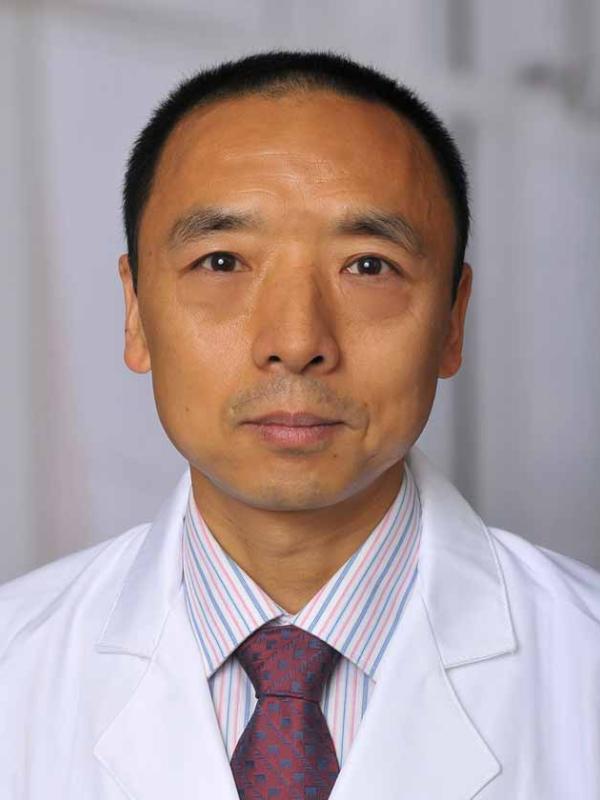
Jidong Fu
Associate Professor
5076 Graves Hall
333 W 10th Avenue
Columbus, Ohio 43210
Google Map
Areas of Expertise
- Department of Physiology & Cell Biology
Education
- PhD: Shanghai Institutes for Biological Sciences, Chinese Academy of Sciences, China
- Post Doctoral, University of California, Davis, California
- Post Doctoral, The Gladstone Institute, University of California, San Francisco, California
Our lab is focused on arrhythmia and cardiac regeneration research. Our primary goal is to uncover the molecular mechanisms that maintain cardiac function and leverage the knowledge to develop therapies for cardiovascular diseases. Currently, we are investigating the unconventional functions of non-coding RNAs, specifically microRNA and lncRNA, in the context of cardiac arrhythmia and myocardial injury.
- Biophysical functions of microRNAs
MicroRNAs (miRs) are small non-coding RNAs known to regulate gene expression through RNA interference (RNAi). Increasing evidence suggests that miRs play a crucial role in maintaining cardiac function and are involved in the the development of various cardiac diseases. Our lab has explored the role of miRs in regulating cardiomyocyte differentiation and its functional maturation.
Recently, we discovered an evolutionarily conserved, novel function of microRNA, demonstrating its ability to directly bind to proteins––such as cardiac ion channels and myofilament proteins––and biophysically modulate heart function beyond the classical RNAi mechanism. Our discoveries suggest that miRs maintain heart homeostasis via two distinct mechanisms: 1) the canonical RNAi pathway, which regulates protein expression and 2) direct binding to proteins to induce rapid biophysical modulation.
We continue to explore the molecular mechanisms behind these miR-protein interaction and their implications for heart diseases.
- LncRNA in cardiac regenerative medicine
Adult cardiomyocytes (CMs) have limited regenerative capabilities; the loss of CMs due to diseases like myocardial infarction, often results in chronic heart failure. Previously, we developed an epigenetic reprogramming approach, directly converting cardiac fibroblasts into induced CM-like cells (iCMs) using a combination of cardiac developmental transcription factors. Our replication of this approach in human fibroblasts was a critical first step toward creating viable treatments for heart diseases.
Recently, we discovered plasma membrane-enriched lncRNAs that are involved in membrane repair and protect cardiomyocytes from ischemia injury. We are investigating the mechanisms and translate these novel discoveries into therapeutic strategies for cardiac regenerative medicine.
- Cardiac electrophysiology and cardiac automaticity
Cardiac arrhythmias are a leading cause of morbidity and mortality, with up to 50% of deaths in heart failure patients attributed to arrhythmias. Normal cardiac electrophysiology depends on the proper expression and activity of various cardiac ion channels. For over 20 years, we had used mouse and human embryonic stem cells (ESCs) and induced pluripotent stem cells (iPSCs) to extensively study the electrophysiological properties of differentiated ESC/iPSC-CMs, including Ca2+ handling and cardiac automaticity. We reported that two potassium currents, inward rectifier current (IK1) and pacemaker current (If), are sufficient to generate pacemaker-like electric activities. Our research on the molecular mechanisms of cardiac automaticity in human iPSC-CMs aims to improve the efficacy and safety of their clinical applications.
